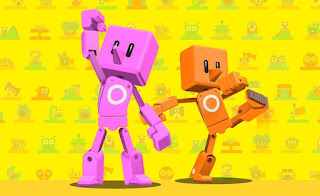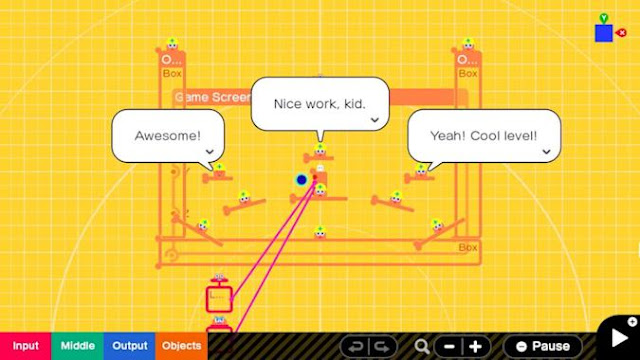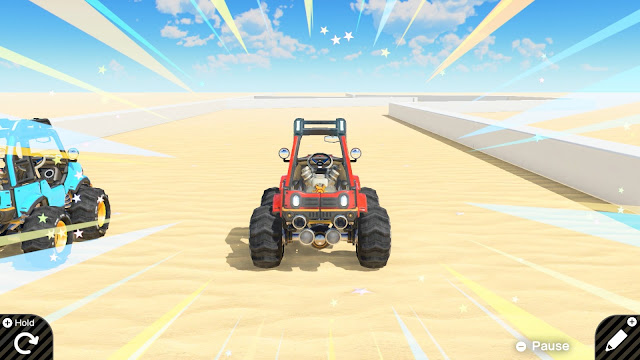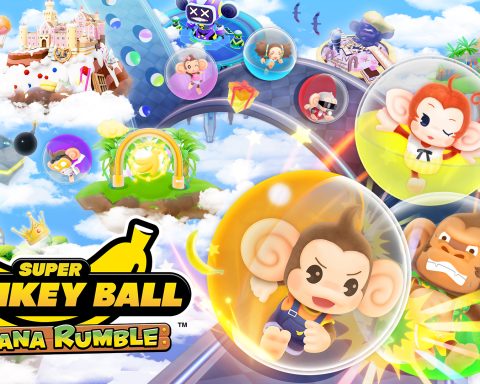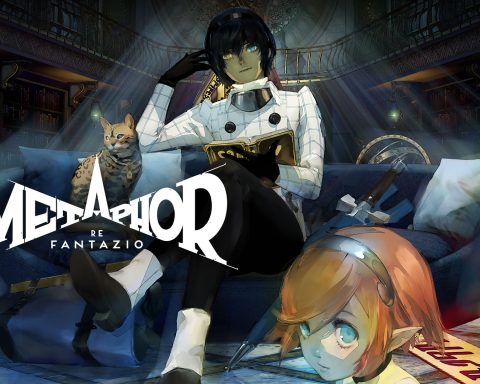Nintendo’s pivot towards LEGO-like entertainment experiences has been a joy to behold. Between the AR Mario Kart, Labo, and now Game Builder Garage, Nintendo is out there encouraging kids to be creative, to design things, and to learn important thought processes and logic as they have fun. That’s always the key characteristic of a good toy for children, and just like the previous projects, Game Builder Garage is an excellent toy.
Game Builder Garage is a basic no-code game development engine. Drop objects into a space, link them up to give them commands, or change their behaviour in the settings and hey, presto! You’ve got a game. To give you the most simple example of how this works:
1) Place a character in a space.
2) Add a control module to the working area.
3) Designate what action the control module will look after (for example “jump when this specific button is pressed”).
4) Draw a link between the action module and the character.
5) Head back into the game and try that jump button out!
That’s really the extent of the programming structure of this software; you place activity blocks in the workspace, draw lines to the various active and non-controllable characters, and slowly build up the game with more objects and more commands. Of course, as simple as it is to use, and as friendly as the aesthetics and UI is, this is still a genuine game development tool, so that drag-and-drop interface is accompanied by plenty of menus within menus to learn and master. You can experiment with them at your own pace, however, and the basic premise is instantly understandable.
The ins and outs of how Game Builder Garage works are taught over a handful of lessons, which are broken down into digestible chunks, in which the tutorial will show you, bit-by-bit, how to build increasingly complex games. These lessons range from about 30 minutes in length total to 90 minutes or more, and while you’ll start with creating a simple 2-player tag game, you’ll soon move on to build shooters, kart racers, 3D platformers and adventure games. What seems on the surface to be too simple for its own good eventually shows itself to be quite versatile and flexible, and you’ll be able to use it to create all kinds of different genres and experiences by the end. You’ll always be restricted to using the in-software art assets and the like, but this is a tool for teaching people the basic logic of software development. It’s not Unity or Unreal Engine. You graduate to those after learning stuff like this first.
You can share the games you create, though it’s not an open platform where you just upload things, as we’ve seen with other game making software on the Switch. Instead, you need to know the creator’s details to connect directly with them. Given the younger target audience of this software, that makes sense from a safety point of view, and it’s hardly a meaningful barrier to sharing games, as it’s easy enough to form game development communities online if you want to get deep into creating and sharing games (I do fully see that happening).
As I’ve mentioned a couple of times, Game Builder Garage has warm and inviting aesthetics. Given that software development environments notoriously lack in presentation quality, the cute little heads that represent the various modules create an environment that is fun to play around in while, at the same time, not being overbearing and allowing you to focus on the task at hand when you’re deep into the programming. The UI is a delight too. I had assumed that Nintendo would make it work well in that regard, because it is Nintendo, but I never imagined that software development could be so intuitive without a keyboard and mouse. I would have preferred more assets to play around with once out of the tutorials and in the “free creator” mode, because you really are quite limited there, but again this is training software. Not a game maker, as such.
The thing that often stops people short with game development is that the programming side of things can be intimidating. To this day the logic and process of software development throws me into a spin every time I look at it… and I do create games. They might be visual novels, sure, but they’re games. I’ve always felt like I should know more about programming, but I just can’t do it. Game Builder Garage might be pitched at a younger audience – and I can genuinely see Nintendo selling a bunch of Switches to schools for use in the younger grades as an introduction to the all-important education space – but the systematic clarity with which the tutorials of Game Builder Garage are arranged, and then the ease of use and accessibility of the software to play around with afterwards, makes it the best introduction to programming that I’ve come across, for anyone of any age.
– Matt S.
Editor-in-Chief
Find me on Twitter: @mattsainsb

